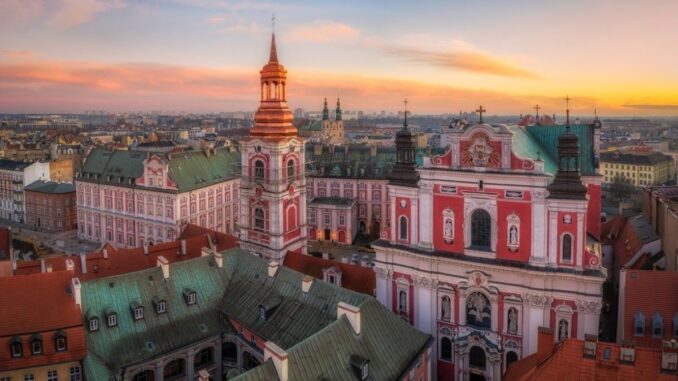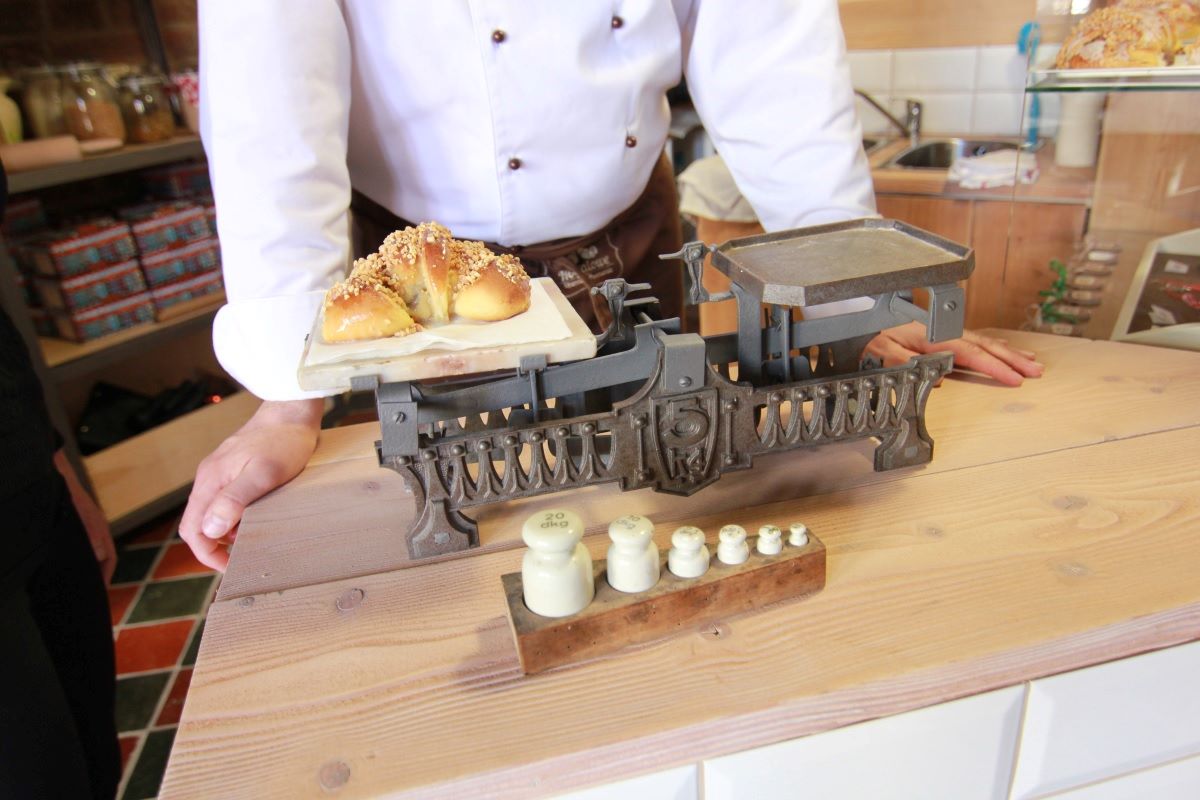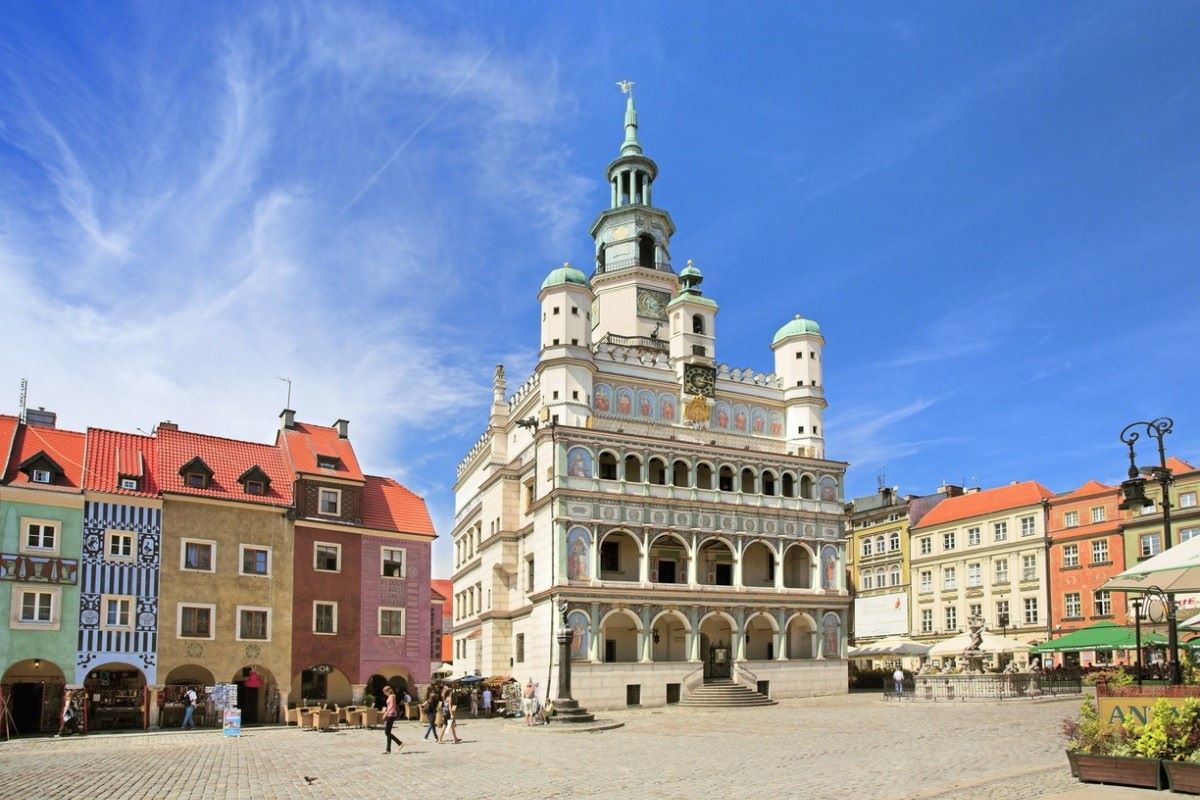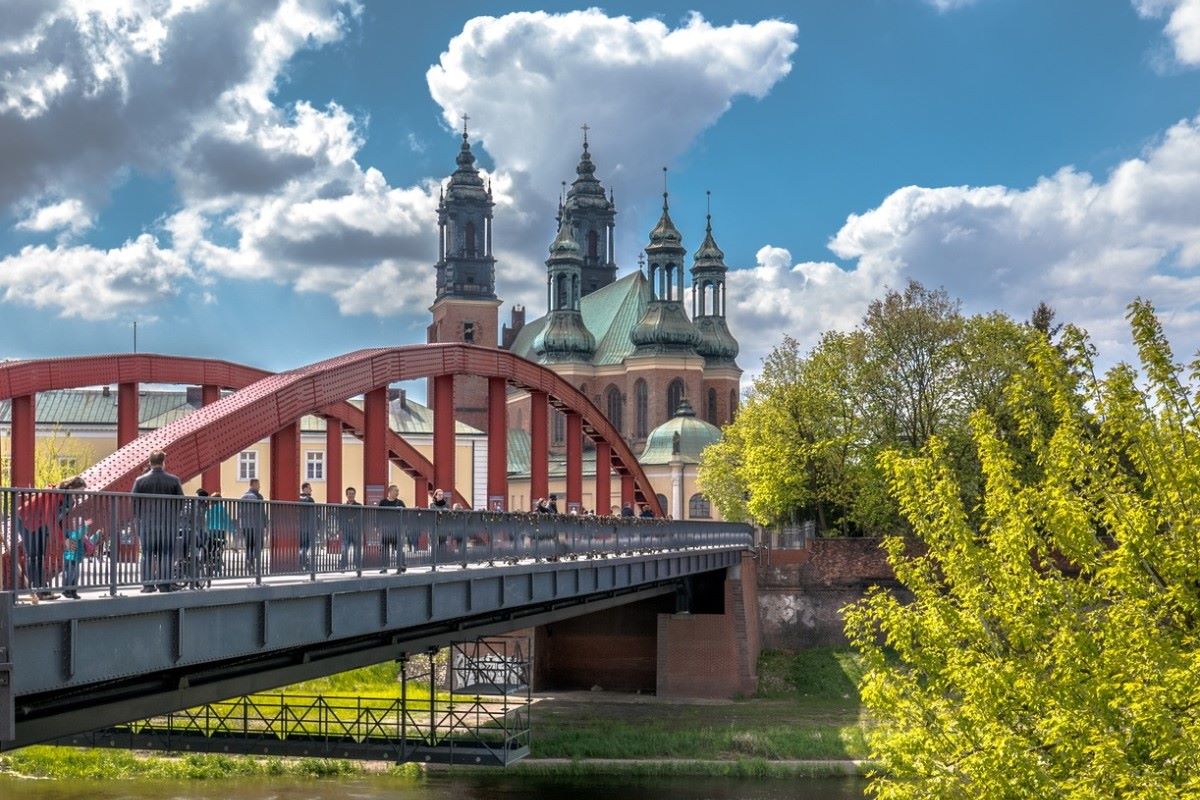
We were like a line of sitting ducks awaiting our fate. Standing there proud in tall chef hats and bright pink aprons.
Our mentor looked us all up and down and with a wry smile, he charged us with our culinary tasks.
Welcome to the quirky world of the Croissant Museum of Poznań, where interactive is the main staple of your visit.
At 2:00pm each day, an English-speaking workshop allows gullible people like me and my 16-year-old son, Ruaridh, to volunteer to help one of the finest croissants in the world.
The St Martin’s croissant is something special. So popular in fact, that every November 11th, a parade is held to mark the birth of St Martin and to celebrate, with 1.25 million of the beauties eaten on that day alone. The date also marks Polish independence, after 123 years of Prussian, Austrian and Russian occupation.
Equating to about 250 tonnes of the most filling pastry you will ever eat, it’s delicious. For in between each layer of the horseshoe shaped delicacy, a paste like mixture of poppy seeds, nuts, raisins, almonds, sugar and butter is gently placed. Topped with sugar and nuts, one croissant weighs around 250 grams and is a meal in itself.
The croissant is taken so seriously in this part of the world, that in 2008 it was given European protection and only certified bakers are allowed to sell the pastries, made from a special recipe.

It was first invented by a baker who prayed to St Martin, one of the most popular Catholic saints, and dreamt a white horse entered the city and lost its golden shoe. The next day he made horseshoe shaped croissants to give to the poor and the annual parade celebrates the symbol of sharing, with St Martin, who is dressed up in a Roman legionnaire’s costume and seated on a horse, leading the way from church to the Royal Castle, where everyone joins in jousting and music, with a huge firework displays ending the event.
The croissant museum lies in the beautiful old market square in Poznań, which is surrounded by colourful tenement buildings, now occupied by hotels and restaurants and there is a lovely vibe.
Just across from the city hall, at noon each day, two mechanical goats butt heads at the top of the tower.
Built in the 13th century, the hall was destroyed by fire in 1551 and to mark its re building, the mayor ordered a special clock to be installed.
A large party was held to mark the event and a young chef called Pietrek was placed in charge of the main dish, venison.
While the meat was cooking, Pietrek decided to take a look at the clock and by the time he returned, the roast was burnt. In a panic, he took off to find a replacement and in a nearby field, he found two billy goats, which he took back to his kitchen. But they escaped and found their way up to the top of the tower, where they started fighting, much to the amusement of the partygoers below.
The mayor found the whole thing funny and ordered two goats to be added to the clock and each day at midday, a trumpet is sounded, and the goats come out and head butt 12 times.

Goats are everywhere in this fun and quirky city and one of the best ways of finding the hidden gems is by joining in the Underground City Games.
Under the guise of Project X, gamers become secret agents and are tasked with putting together a plan to take control of the strategic and high security city, before one of their rivals does.
With clues dotted around the city, it’s a brilliant way to not only stretch your brain, but drink in the elegant architecture and impressive street art.
The 120-minute game has you on your toes and is a fun way to discover places you would normally miss.
It fits well with Poznań’s other claim to fame, The Enigma Cipher Centre, a fabulous place which tells the story behind the breaking of the German code machine by Polish mathematicians Marian Rejewski, Henryk Zygalski and Jerzy Różycki.
The Poznań Card is a great investment if you are keen to see the culture attractions, of which the National Museum is a real delight and filled with Polish paintings and sculptures dating back to the 16th century.
The card also allows you to use the excellent tram and bus network in Poznań and one lovely journey is out to the city’s new zoo. Set in acres of natural landscape, animals, from bears to tigers are looked after with care and respect.

Educational guru Remgiusz Koziński is a fascinating guide whose passion is to spread the word about animals and their habits to children and he spends a lot of his time working with children with special needs and ensuring the information boards are accessible to people with disabilities.
There is a mini train to transport you around this vast oasis which complements the old and free admission zoo in the city centre.
Other gems include Porta Posnania, an interactive heritage centre dedicated to the Cathedral Island, the most ancient district of the city, which played a major role in the formation of the Polish statehood.
The Museum of Applied Arts is housed in the royal castle and if you go up the tower, you have spectacular views of the city. Inside, there are 2,000 objects from the Middle Ages to the present day, with a piece of Napoleon’s hair, a great find!
And for fresh air, a 15-minute stroll leads you to the citadel park and 89 hectares of green space. It was created on one of the biggest forts of 19th century Europe and is a leafy escape from the city and a great place to enjoy a mighty St Martin’s croissant!
Factfile
The friendly tourist team can help you with advice on exploring Poznań at www.poland.travel, while low-cost airlines fly direct to Poznań from UK airports. For airport parking, lounges and transfers, www.holidayextras.com can help.
Author Bio:
Rebecca Hay is an experienced travel writer and member of The British Guild of Travel Writers. Follow her adventures with her family on Twitter and Instagram @emojiadventurer and on Facebook via EmojiAdventurers2.


Be the first to comment